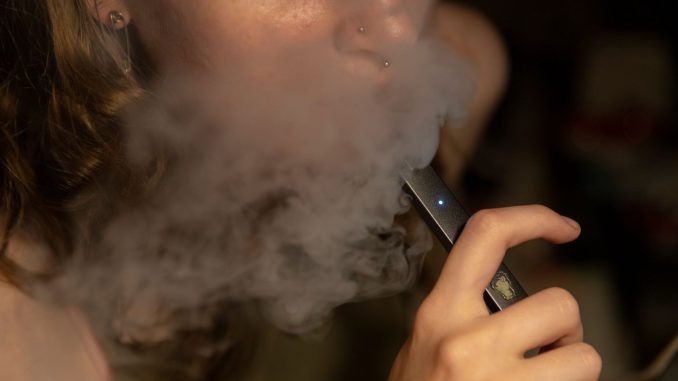Katharine DeRosa, News Editor
A new study by VCU and Penn State researchers suggests e-cigarettes that deliver similar amounts of nicotine as actual cigarettes are useful to people looking to reduce their smoking habits.
Researchers from VCU and Penn State College of Medicine in Hershey, Pennsylvania, led the effort — Caroline Cobb, lead researcher, is an associate professor of health psychology at VCU and Jonathan Foulds is a professor of public health science at Penn State.
Foulds began his study of e-cigarettes in 2012. He was approved for research funding in 2013 and the project got off its feet in 2015. The team landed on studying the effects of e-cigarettes in those who are trying to reduce smoking.
“If it wasn’t from the nicotine that people draw from cigarettes, people would be no more likely to smoke than to blow bubbles,” Foulds said.
The study consisted of four randomized groups: e-cigarette with similar levels of nicotine to a regular cigarette, lower levels of nicotine, nicotine-free e-cigarettes and a nicotine-free device. Everyone was instructed to smoke less and use their devices when they did smoke, Foulds said.
Cobb said the groups were “double blind,” meaning that neither the researchers or participants knew what groups the participants were in.
“Once I made the decision, I had no urge to go back to smoking tobacco products,” said senior business major Kevin McGarry.
Foulds said he disapproves of the caps on nicotine concentration in e-cigarette cartridges established by the European Union. He said the higher levels are key to helping people smoke less cigarettes because it imitates the real thing.
“What we found was that the e-cigarette with the highest nicotine concentration, a level that would be banned and in all of Europe and a level that Canada’s considering banning was the only one that consistently reduced the harm that you get from e-cigarettes,” Foulds said.
Foulds and Cobb looked at the biomarker NNAL, which is known to cause cancer from smoking, according to the Centers for Disease Control and Prevention. The highest level of nicotine concentrate was the only group that reduced NNAL levels entering people’s bodies, Foulds said.
“One argument might be that higher dose liquids result in less exposure,” Cobb said. “It’s less work but it also means they have to ingest potentially less liquid to get the same amount of nicotine absorbed into their system, so less liquid means less chemicals they would have to inhale.”
The study included 130 people in each group, Cobb said. All participants were tracked for adverse effects. Cobb said only 10 people experienced adverse effects and that none were linked to nicotine.
Senior business major Kevin McGarry said he began smoking cigarettes in high school and made the switch to vaping by using a Juul during his sophomore year of college.
McGarry said he smoked socially in high school and began buying cigarettes for himself at the beginning of college.
“Back in freshman year, I pretty much knew that I was addicted to cigarettes,” McGarry said.
Juul devices do not contain tobacco, but they always include nicotine, according to the CDC. Juul vape solutions use nicotine salts, which allow more nicotine to be delivered into the body with less irritation. The CDC reports young people who use e-cigarettes may be more likely to smoke cigarettes in the future.
“Once I made the decision, I had no urge to go back to smoking tobacco products,” McGarry said.
McGarry still considers himself addicted to nicotine and hopes to stop inhaling nicotine.
“I’ve probably done some sort of damage to my lungs, so I think the next step for me is to try some sort of other stuff to do for nicotine that doesn’t involve inhaling anything, and then go from there to try to get nicotine out of my routine altogether,” McGarry said.

